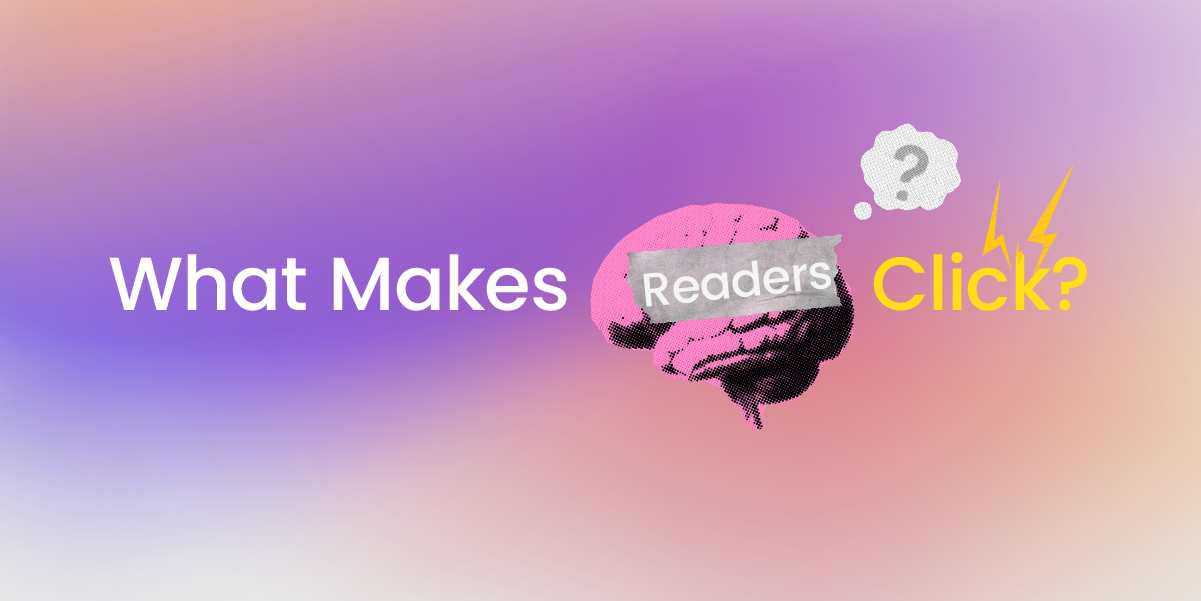In an age where attention is the most valuable currency, understanding what drives a person to read, engage, and click is no longer optional for marketers, it’s essential. Whether you’re writing website copy, social media captions, or sales emails, persuasive writing is grounded not in clever phrases alone, but in psychological insight.
By decoding how people think, feel, and make decisions, copywriters can create messaging that resonates deeply, builds trust, and ultimately drives action. Below, we explore the most powerful psychological principles shaping persuasive copywriting in 2025, backed by data, academic research, and real-world applications.
Why Psychology Matters in Copywriting Today
Consumers in 2025 are more digitally literate, time-starved, and choice-fatigued than ever before. With AI-generated content flooding platforms and audiences seeking authentic engagement, the best copy is now measured by its emotional intelligence as much as its structure or style.
According to a 2024 Salesforce report, 66% of customers expect companies to understand their needs and emotions, not just sell products. To meet this expectation, brands must tap into the cognitive shortcuts and biases that influence human behavior.
1. Reciprocity: Give First to Get Later
Humans are wired to return favours, a principle known as reciprocity, famously studied by psychologist Robert Cialdini. When someone gives us something of value, we’re more inclined to “give back,” whether that’s time, trust, or a click.
Copy that offers free value upfront, such as guides, discount codes, or early access — lays the foundation for this exchange. For example, HubSpot’s free templates and eBooks are not just lead magnets; they’re psychological incentives.
Pro Tip: Use copy that emphasises generosity — “This one’s on us” or “Download your free gift” — to increase opt-ins and goodwill.

2. Social Proof: Show Me Who Else Believes You
Humans are tribal. In uncertain scenarios, we look to others to validate our decisions. This is why testimonials, star ratings, influencer endorsements, and real-time data like “2,453 others just bought this” work wonders in marketing copy.
Research by Nielsen shows that 92% of consumers trust recommendations from peers over brand messages. Smart brands display this “evidence” on product pages, emails, even in headlines (e.g., “Why 1 Million People Trust X”).
Execution tip: Turn your testimonials into micro-narratives. Instead of “Great product!”, write: “I increased my client base by 40% after using this tool.
3. Scarcity & Urgency: Limited Availability Triggers Action
We fear missing out. When something is scarce or available for a limited time, it becomes more desirable — this is the psychology of loss aversion at work, a phenomenon first described by Daniel Kahneman and Amos Tversky in behavioural economics.
That’s why phrases like “Only 2 seats left” or “Offer ends at midnight” spark faster action. Booking.com mastered this tactic with pop-ups like “Last room at this price!”
Use with care: Overusing urgency can feel manipulative. Ensure scarcity is real or value-based (e.g., “We’re only accepting 20 beta users”).
4. Authority: Expertise Builds Trust
People are more likely to be persuaded by credible sources. Copy that highlights certifications, years of experience, media mentions, or expert quotes leverages the psychological principle of authority.
LinkedIn’s B2B study in 2024 showed that thought leadership content is 2.5x more likely to earn trust when it includes data, citations, or expert insights.
What to use: Instead of “We know marketing,” say: “Our strategies are trusted by Google, Shopify, and 300+ startups.
5. Commitment & Consistency: Small Yeses Lead to Big Ones
Getting your reader to say “yes” once — even to something small — dramatically increases the chances they’ll say “yes” again. This cognitive bias, known as commitment and consistency, is why smart marketers ask for micro-conversions first: a social follow, a quiz, a free trial.
Think of how Duolingo encourages users to commit to just “5 minutes a day” — a low-friction entry point that leads to long-term engagement.
Structure your copy with progressive CTAs: first engage, then educate, then invite.

6. Storytelling: Making It Personal and Memorable
The most persuasive copy doesn’t feel like marketing — it feels like a story. Stories stimulate brain activity across multiple regions, enhancing memory, empathy, and engagement.
Functional MRI studies at Princeton University showed that when someone hears a story, their brain patterns start to mirror the storyteller’s, leading to deeper connection.
Airbnb’s “Belong Anywhere” campaign thrived not through features, but through traveler stories that painted emotional, human experiences.
Even in B2B copy, infuse narrative. Show transformation, tension, and resolution.
7. Specificity & Clarity: Vague Doesn’t Convert
According to Wordstream, landing pages with specific numbers convert 2x more than those with general statements. “Grow your revenue” is bland. “Increase your MRR by 38% in 60 days” is magnetic.
Specificity signals honesty. It shows you did your homework. And in an era where trust is fragile, that matters.
Don’t just say it works — show the proof. Include exact figures, timeframes, or user quotes.
8. Simplicity: Reduce Cognitive Load
Research by the Nielsen Norman Group shows that users often leave web pages within 10 to 20 seconds unless the content clearly communicates its value — fast. In copywriting, clarity consistently outperforms cleverness, ensuring your message gets through before attention slips away.
Your readers are distracted. Your message competes with a dozen tabs, Slack pings, and mental to-do lists. Make it easy to scan, absorb, and act.
How to do it: Use short sentences. Avoid jargon. Break up text. One message per paragraph.
Great copy is meant to move, not just inform. It uses the mechanics of psychology not to manipulate, but to connect. By understanding what triggers attention, trust, and desire, copywriters in 2025 can rise above the noise and deliver messaging that truly matters.
So before your next CTA, headline or campaign, ask yourself:
How will my audience feel?
